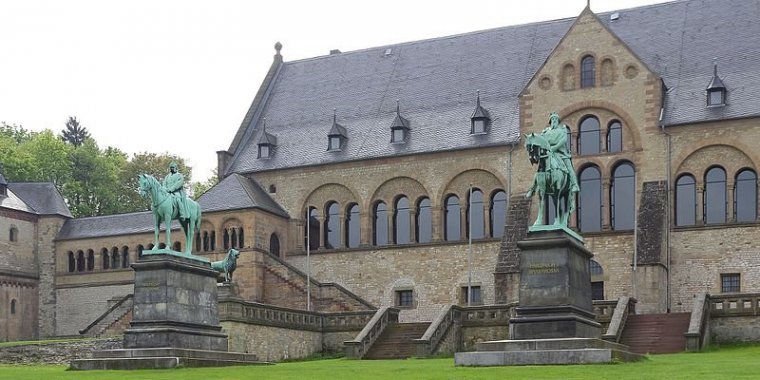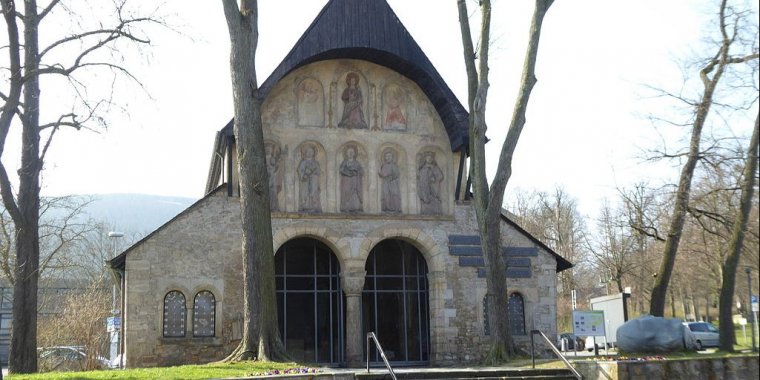| Published in Attractions / Places of Interest |
Imperial Palace of Goslar, Germany
The Imperial Palace of Goslar was built between 1040 and 1050. For more than 200 years German and European history was made here.
The palace grounds originally included the Kaiserhaus, the old collegiate church of St. Simon and St. Jude, the palace chapel of St. Ulrich and the Church of Our Lady (Liebfrauenkirche). The Kaiserhaus, which has been extensively restored in the late 19th century, was a favourite imperial residence, especially for the Salian emperors.
As early as the 11th century, the buildings of the imperial palace had already so impressed the chronicler Lambert of Hersfeld that he described it as the "most famous residence in the empire". Since 1992, the palace site, together with the Goslar's Old Town and the Rammelsberg has been a UNESCO world heritage site.
Open: April - Oct: 10AM - 5PM, Nov - March: 10AM - 4PM, closed during special events. Admission: Adults € 7.50, Children/Youth € 4.50. Kaiserbleek 6
• The Kaiserhaus is 54 metres long and 18 metres wide and is the largest secular building of its time. The centre of the building is its two-storey hall. This contains two rooms on each floor of 47 metres long and 15 metres wide.
Both had a beam ceiling, which was supported in the middle by a row of columns. The upper of the two rooms was reserved for the emperor and his immediate entourage, the lower room for courtiers of lesser rank.
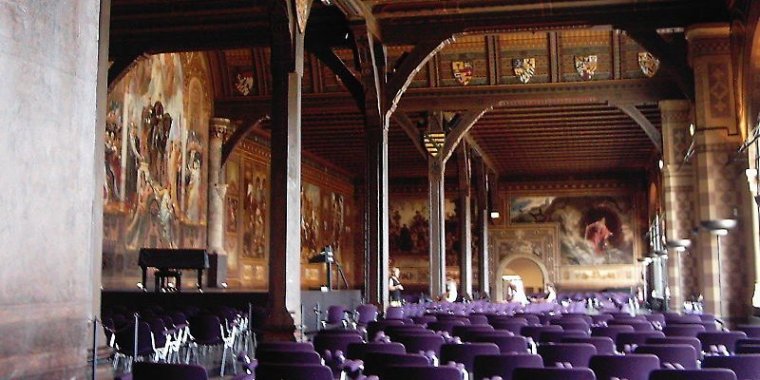
Emperor's Hall at the Imperial Palace, Goslar. ![]()
• Collegiate Church of St. Simon and St. Jude was built between 1040 and 1050. It was consecrated on 2 July 1051, by Archbishop Hermann of Cologne and dedicated to Simon the Zealot and Jude the Apostle. At this time, the basilica was the largest Romanesque church east of the Rhine and became the model for many similar buildings in northern Germany.
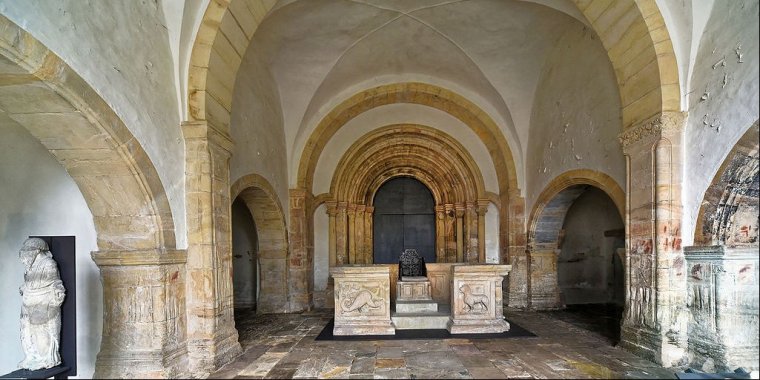
Interior with Imperial Throne. ![]()
Around 1150 a porch was added in front of the north portal of the church. The church building was demolished in 1819–1822; today, only the porch of the north portal is preserved. The former north door of the cathedral is now the back wall of the porch.
• Palace Chapel of St. Ulrich. The plan of the double chapel of St. Ulrich forms a so-called Greek cross, with equal arms and three east apses in the lower chapel. The upper chapel, however, is octagonal with only one eastern apse. Such a design is unique in Germany. Today a sarcophagus stands right in the centre of the cross in the lower chapel, whose cover slab has a sculpture dating to about the middle of the 13th century.
This is a life-size, horizontal figure of Henry III, his head on a pillow, a dog lying at his feet, in his right hand the sceptre, in his left, the model of a church. The sarcophagus contains (in an octagonal gold capsule) the heart of Henry III. (Wikivoyage, Wikipedia)
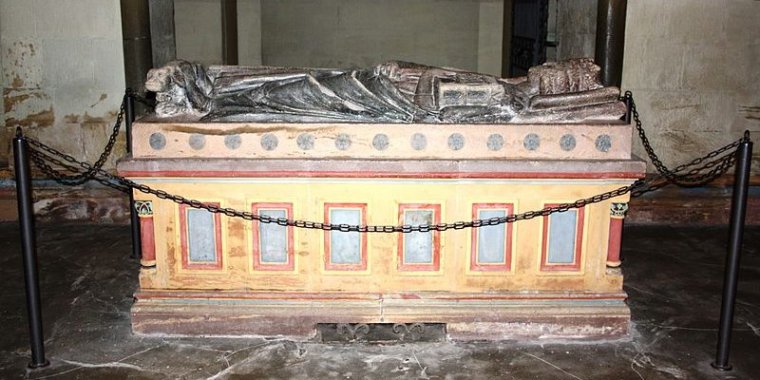
Sarcophagus of the Emperor Heinrich III in the Saint Ulrich Chapel of the Kaiserpfalz, Goslar. ![]()
YOU MAY ALSO LIKE





 If you own or manage a travel-related business such as a hotel, a bed-and-breakfast, a restaurant, a pub or a cafeteria, you can create a web page for your business for free on Titi Tudorancea Travel Info. » |
